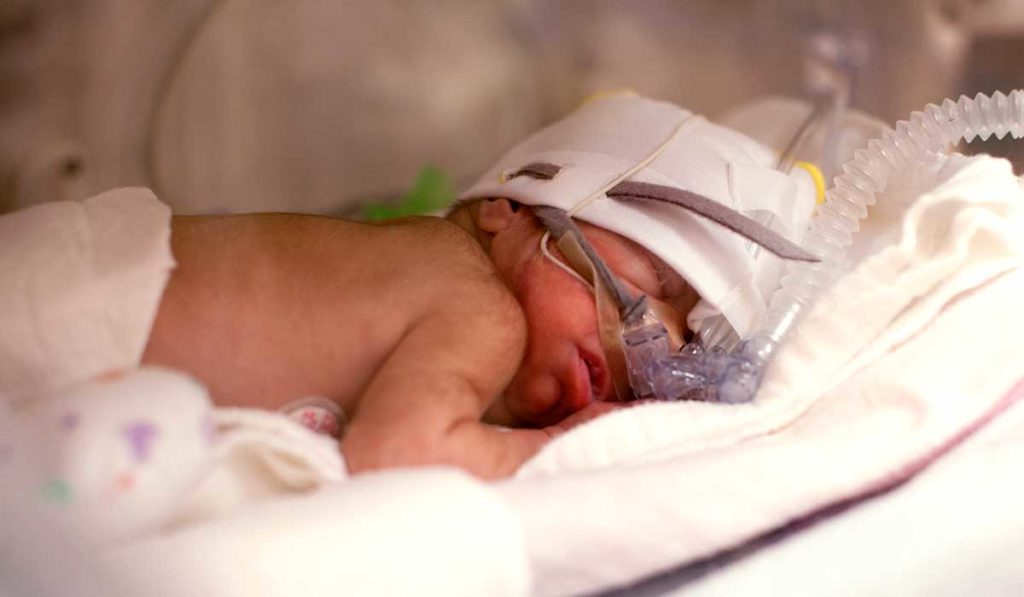Researchers at six prominent children’s hospitals have collaborated over the past decade to learn about the causes, treatments, and health prospects for extremely low gestational age neonates (ELGANs) with bronchopulmonary dysplasia (BPD). Through their Premature and Respiratory Outcomes (PROP) study of 835 ELGANs, they are generating diverse datasets to inform treatment and interventions.
“The PROP study has allowed us to look at social and other predictive factors, but it also allows us to look at biochemical profiles so that we can identify therapeutic targets for the future.”
“The PROP study has allowed us to look at social and other predictive factors, but it also allows us to look at biochemical profiles so that we can identify therapeutic targets for the future,” said Paul Moore, M.D., director of Pediatric Allergy, Immunology and Pulmonary Medicine at Monroe Carell Jr. Children’s Hospital at Vanderbilt. Moore says that between one-third and one-half of neonates born four months early have no respiratory problems by the time they reach term or are discharged, but another third face a difficult struggle.
“We have been sorting out the mother’s history from the baby’s history, looking at their biochemical profiles, and learning which factors are associated with respiratory morbidity from birth to one year of age. Our next question is, how does all of this relate to the health of these children into childhood and school age?”
Maternal Health and BPD
Bronchopulmonary dysplasia is a chronic lung disease severely affecting about 26 percent of infants born at less than 32 weeks of gestation. For survivors, downstream tissue damage from BPD threatens to develop into asthma or chronic fibrotic conditions like COPD.
The PROP researchers are beginning to understand the protective factors against BPD and how providers can help give premature babies a better chance of good health. “For a long time, people have thought prematurity inevitably put ELGANs at high risk for respiratory distress and BPD,” Moore said. “It turns out that there are other important factors that determine risk. Despite being born premature and going through NICU, many babies thrive.”
Almost all roads lead to maternal health. Moore says factors like infection at birth, small size for the gestational age and maternal smoking impact ELGANs, not only in prematurity rates but also in outcomes. “Our initial results identified that the factors that describe you on day one of life – which reflect maternal and fetal health and genetics – are as likely to predict your one-year pulmonary outcome as what you look like at NICU/hospital discharge.”
Preventing premature birth is still the top priority. “Where there is disparity, where there is poverty, the most important thing we can do to prevent BPD is to prevent premature births by optimizing the mother’s condition,” Moore said.
“Despite being born premature and going through NICU, many babies thrive.”
The Need for Therapy Consensus
Treatments have evolved. Today, CPAP and BiPAP have ever-safer, more titratable oxygen delivery capabilities. Drug therapies – diuretics, inhaled steroids, corticosteroids and bronchodilators – often substitute for forced aspiration to further lower the risk of tissue damage.
Yet the PROP study shows that consensus on treatment strategies remains elusive. Nearly half the ELGANs in the study received no respiratory medication at all over their first year of life, while another 30 percent both developed BPD and received substantial drug support.
“We are seeing high regional variability in the delivery of care,” Moore said. “This underscores the need for better evidence-based data on how to treat these infants.”
Follow-up into Childhood
The children in the PROP study are currently between the ages of five and eight. Moore says the NIH has supplied additional funding to follow the health status of the entire PROP cohort, including spirometry and pulmonary function tests and blood and gene samples.
“One of the major things we will look for is the influence of smoke exposure on prematurity and on long-term outcomes,” Moore said. “Further, we want to understand how all changes that take place over the neonatal period influence lung function, the development of asthma, and other respiratory concerns of childhood.”






